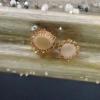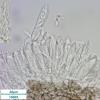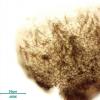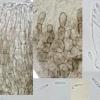
14-11-2025 16:26
 Marian Jagers
Marian Jagers
Hello everyone, On dead wood of Cytisus scoparius

14-11-2025 18:31
 Lothar Krieglsteiner
Lothar Krieglsteiner
Hello,can somebody provide me with a file of:Rothe

12-11-2025 09:25
 Viktorie Halasu
Viktorie Halasu
Hello, I need help with a pale terrestric Pseudom

11-11-2025 20:16
Bohan JiaHi, lastly I have found these tiny yellow decayin

09-11-2025 13:20
Hello.A tiny ascomycete, appearing as erupting gra

08-11-2025 00:29
 Francois Guay
Francois Guay
I found this species in Quebec, Canada, on herbace
When thinking about that I found the intrahymenial parasite Helicogonium about which I knew nothing beforehand. I have observed no ascoconidia and no anamorphs. The asci are 30.0 - 33.8 × 6.1 - 7.20 and spores in asci are on avg. 7.8 × 2.0 µm.
Am I on the right track - is this a Helicogonium? If so, does it have a name? I am aware of only one old Helicogonium collection from Finland, collected in 1851.

the asci are too short and there are no lanceolate paraphyses. Isn't it possible, that one of those small apothecia of Olla cf millepunctata got mixed into your Trichopezizella preparate?
Viktorie




The asci are now 31-44 × 5.5-7.3 and the spores 7.9-8.7 × 1.9-2.6. Perhaps something around Pyrenopeziza atrata?



 Nove-nalezy-z-NWOFranken-Engel-Svr-ek-1993--0001.pdf
Nove-nalezy-z-NWOFranken-Engel-Svr-ek-1993--0001.pdf
